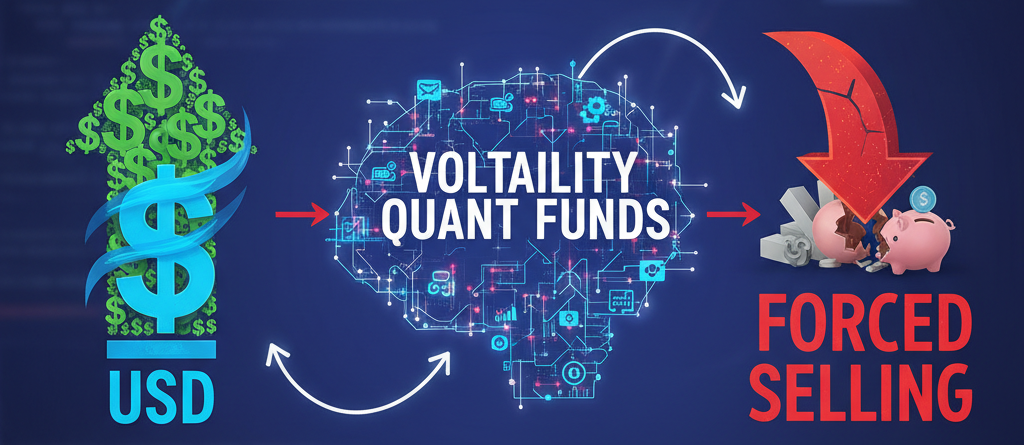In the world of finance, there are various terms and concepts that can seem complex and unfamiliar. Two such concepts are the Treasury General Account (TGA) and Direct Indexing. In this blog post, we will demystify these concepts, exploring their significance and implications in the financial landscape.
Part 1: The Treasury General Account (TGA)
The Treasury General Account (TGA) is an account held at the U.S. Federal Reserve that serves as the primary operating account for the U.S. Department of the Treasury. It is essentially the checking account of the federal government. The TGA holds the government’s cash balances and receives deposits from various sources, including tax revenues, borrowing from the public, and the issuance of Treasury securities.
Significance of the TGA:
- Cash Management: The TGA plays a vital role in managing the cash flows of the federal government. It serves as a repository for incoming funds and facilitates the disbursement of funds for various government operations, including payments for federal programs and services.
- Debt Issuance and Management: The TGA also helps the Treasury Department in managing the issuance and redemption of Treasury securities. When the government needs to borrow money to finance its operations or refinance existing debt, it can draw funds from the TGA or deposit funds into it as needed.
- Monetary Policy Operations: The TGA has implications for monetary policy operations conducted by the Federal Reserve. Changes in the balance of the TGA can affect the level of reserves in the banking system, which, in turn, can impact interest rates and the broader economy.
Part 2: Direct Indexing
Direct Indexing is an investment strategy that allows investors to build a portfolio by directly owning the individual stocks or securities that make up a specific index, rather than investing in a fund that tracks the index.
Benefits of Direct Indexing
- Customization: Direct indexing offers investors the ability to customize their portfolios to align with their values, investment strategies, or specific investment objectives. Unlike ETFs or mutual funds, where investors have limited control over the underlying holdings, direct indexing allows for the exclusion or inclusion of specific stocks based on individual preferences. For example, investors can avoid investing in companies involved in industries they find objectionable, such as tobacco or firearms.
- Tax Efficiency: One of the significant advantages of direct indexing is its potential for tax efficiency. By directly owning individual stocks, investors can selectively harvest capital losses to offset capital gains. This strategy, known as tax-loss harvesting, can help reduce tax liabilities and increase after-tax returns. Additionally, direct indexing allows for the implementation of tax-efficient strategies like managing holding periods or tax optimization at the individual security level.
- Cost Savings: Investing in index funds or ETFs often involves paying management fees and other expenses associated with fund administration. With direct indexing, investors can potentially reduce these costs by cutting out the middleman and owning the underlying securities directly. While direct indexing may have higher transaction costs due to the individual stock purchases, the overall cost structure can be more favorable, especially for larger portfolios.
- Enhanced Performance: Direct indexing can offer the potential for enhanced performance compared to traditional index funds or ETFs. By directly holding the underlying stocks, investors have the opportunity to capitalize on specific investment insights or strategies that are not available in a fund structure. For instance, investors can choose to overweight certain stocks or sectors they believe will outperform the broader market, potentially leading to improved returns.
Considerations and Challenges
While direct indexing presents numerous benefits, there are a few considerations and challenges to keep in mind:
- Capital Requirements: Direct indexing typically requires a larger initial investment compared to investing in index funds or ETFs. Investors need sufficient capital to purchase individual stocks in the desired proportion to replicate the chosen index.
- Maintenance and Monitoring: Direct indexing involves ongoing maintenance and monitoring of the portfolio. Investors must actively manage the individual stocks, periodically rebalance the portfolio, and keep track of corporate actions such as dividends or stock splits.
- Accessibility: Currently, direct indexing is more accessible to high-net-worth individuals or institutional investors due to the costs and complexity involved. However, as technology advances and investment platforms evolve, direct indexing is becoming more accessible to a broader range of investors.
Conclusion
The Treasury General Account (TGA) and Direct Indexing are two important concepts in finance with distinct roles and implications. The TGA serves as the primary operating account for the U.S. Department of the Treasury, facilitating cash management, debt issuance, and monetary policy operations. Direct Indexing, on the other hand, offers investors greater control, customization, potential tax advantages, and the opportunity to enhance portfolio performance by directly owning individual stocks that make up an index.
By understanding these concepts, investors can navigate the financial landscape more effectively and make informed decisions about managing their funds and building investment portfolios. Whether it’s monitoring the cash flows of the federal government or seeking a more personalized and tax-efficient investment strategy, knowledge of the TGA and Direct Indexing can empower individuals to make sound financial choices.







